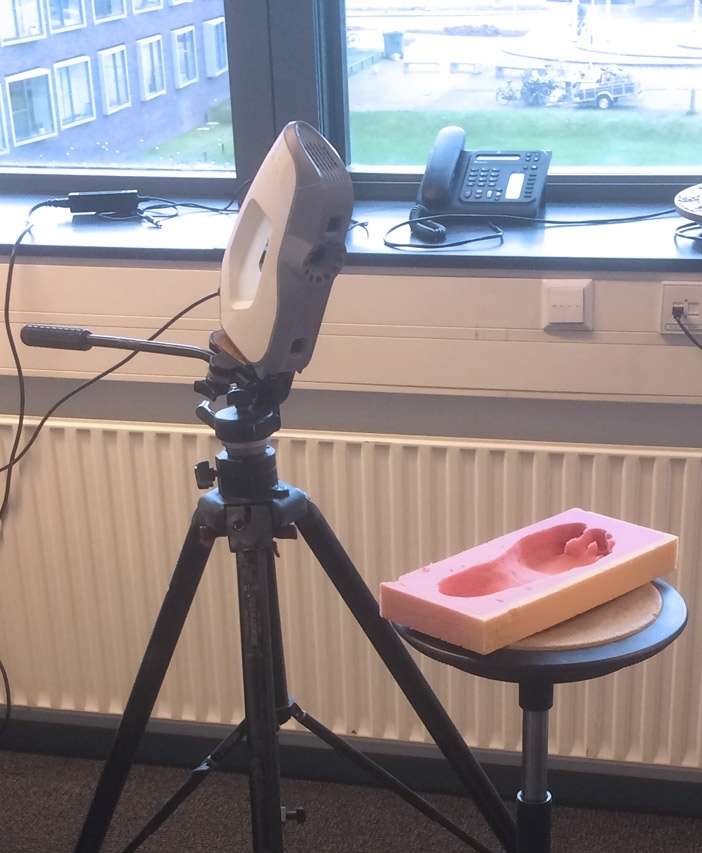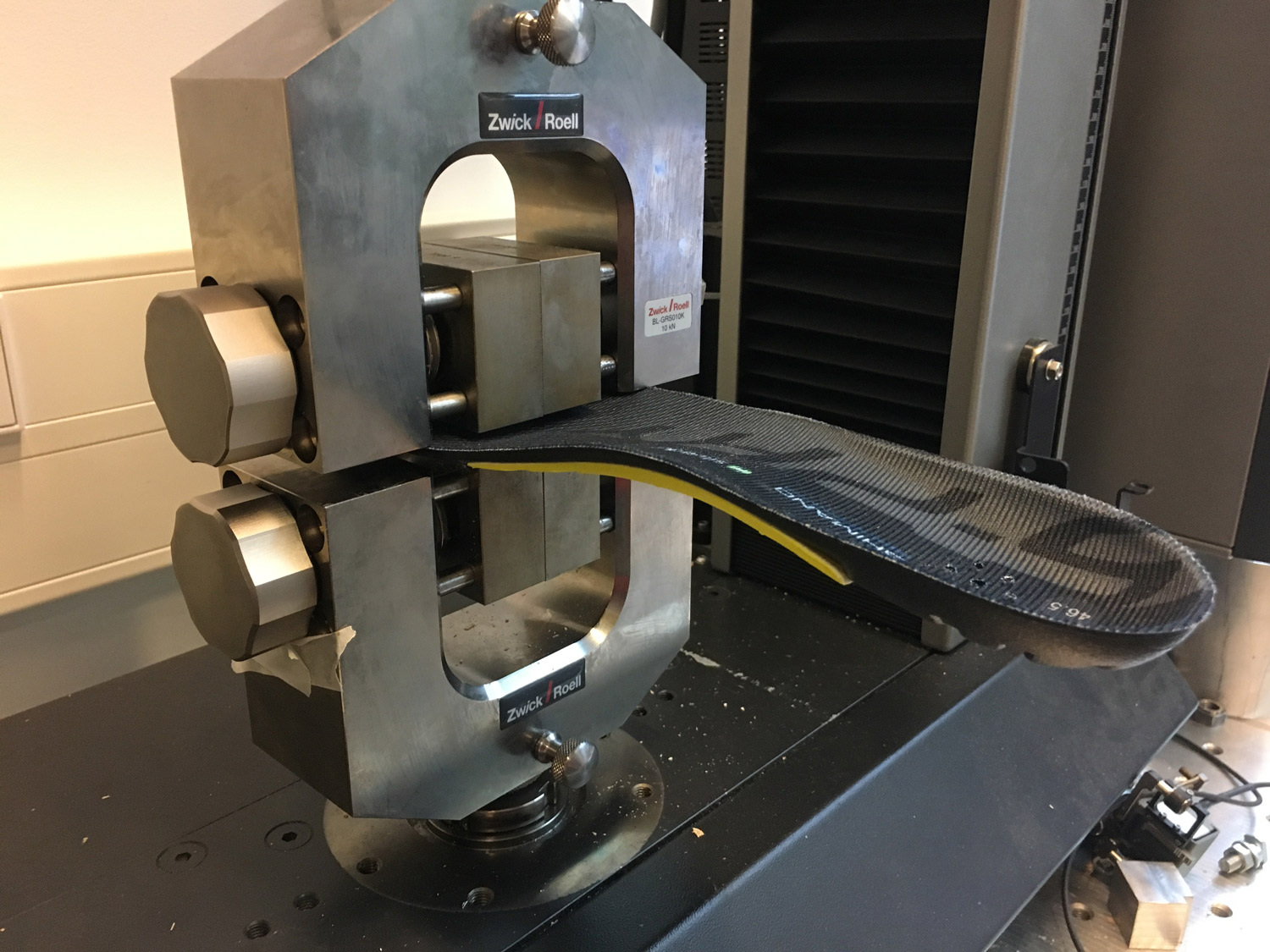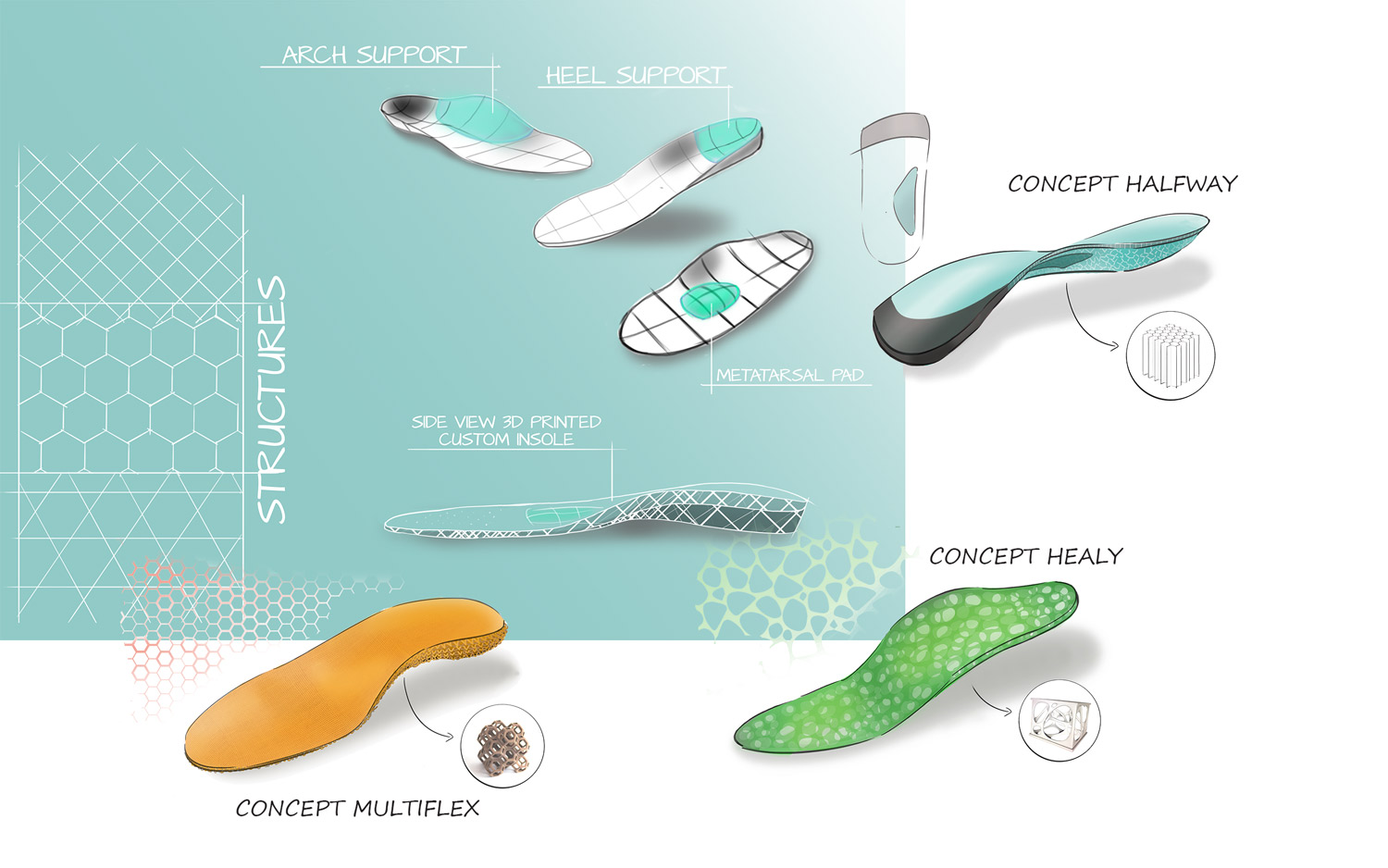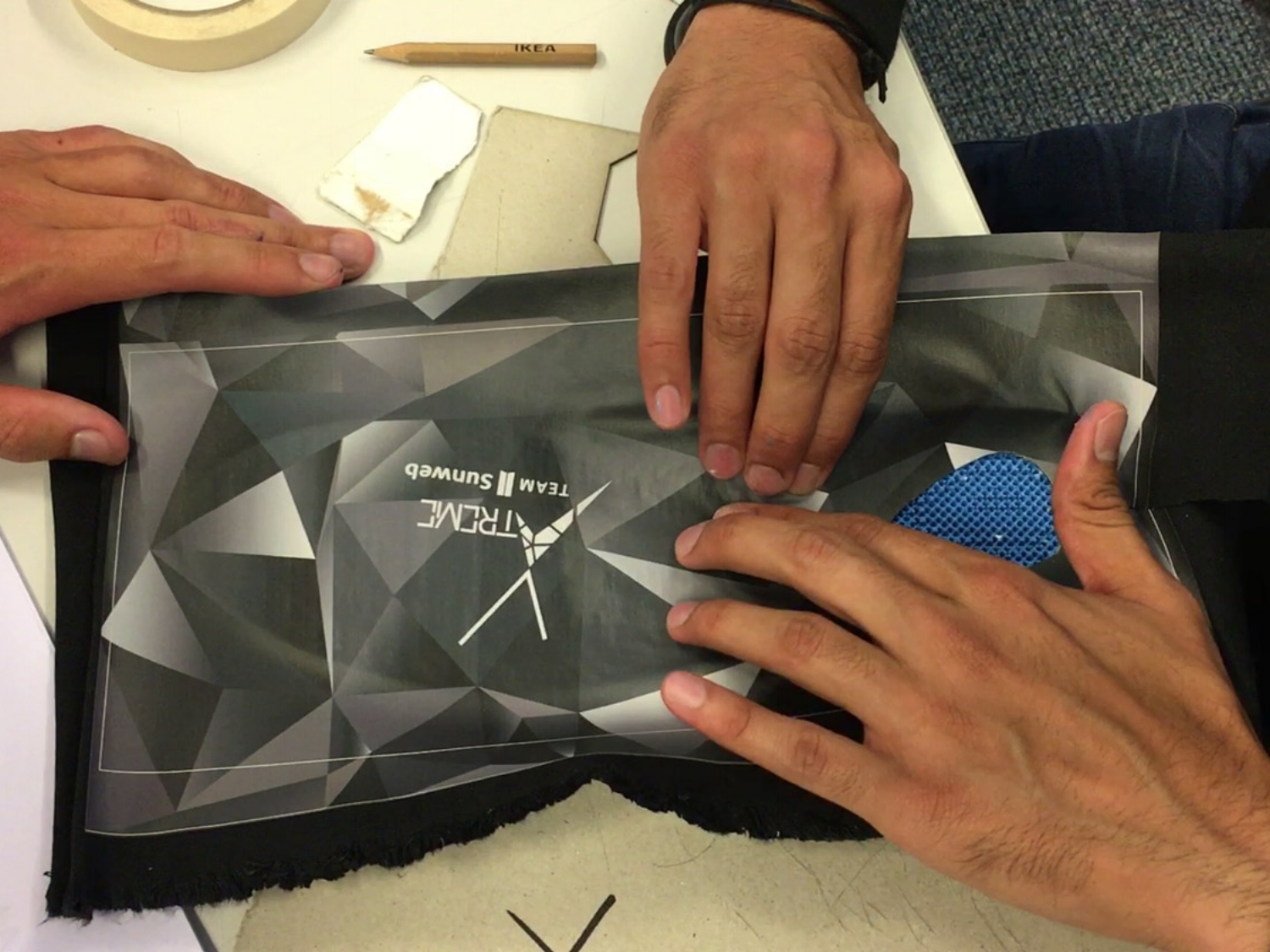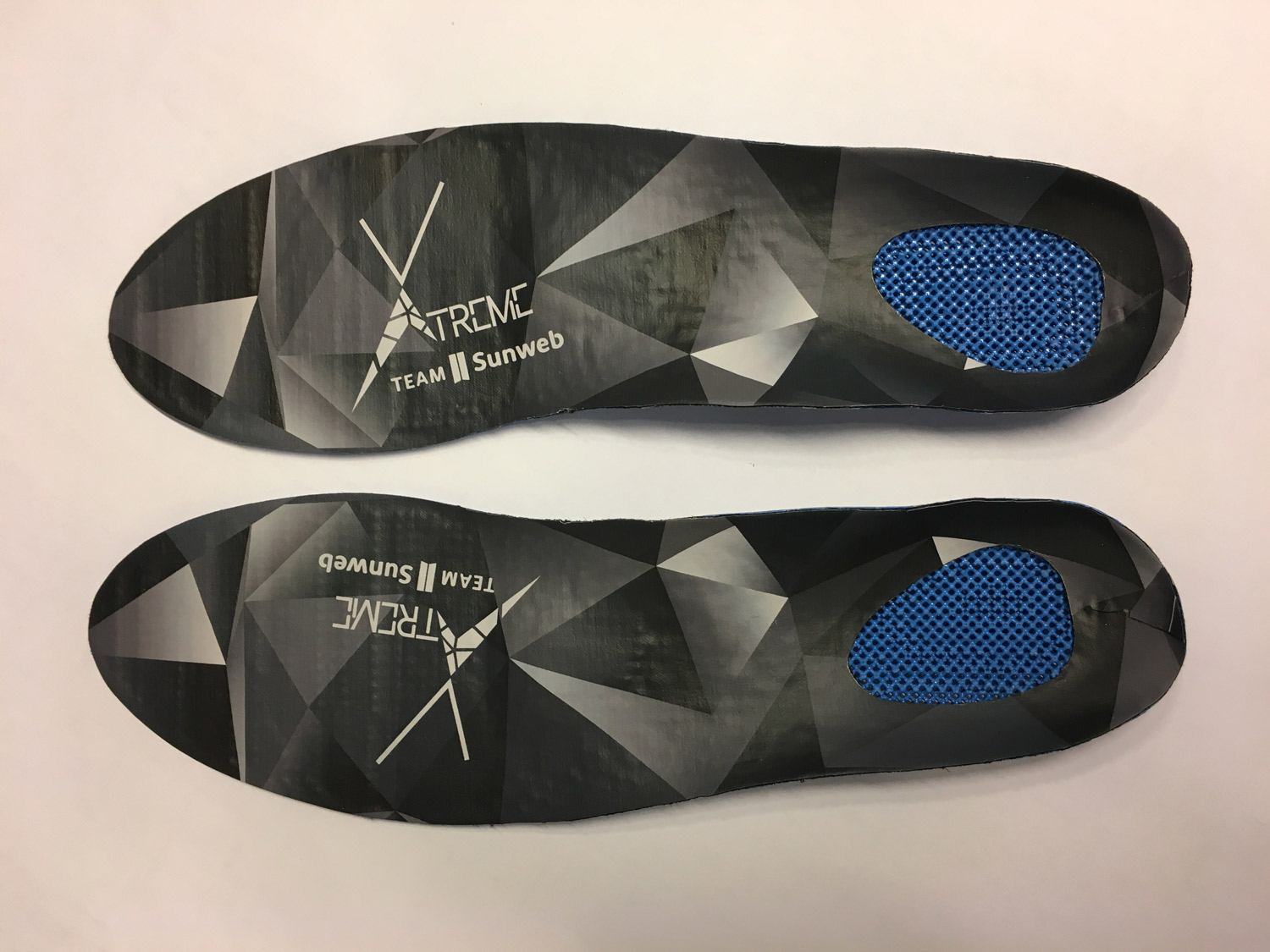
Xtreme Insoles - Custom 3d Printed Insoles
Professional road cyclists experience foot injuries due to problems in the foot-pedal interface. These problems can sometimes be corrected using wedges or Pronation/Supination insoles. However, these problems may persist due to the cyclists foot anatomy and plantar pressure during cycling. Professional Cycling Team Sunweb and performance materials manufacturer Low & Bonar wanted to find a solution to these problems.
As a result of our teamwork, we designed custom 3d printed shoe insoles called Xtreme insoles for the professional road cyclists. These insoles reduce peak pressures occurring in the cyclists foot during races to reduce the risk of overuse injuries and improve performance.
Research
We consulted podiatrists and bike fitters about the issue and found out that besides correcting the foot pedal interface, it is equally important to take into consideration the dynamic pressure distribution during cycling. To cope will all these issues simultaneously, creating custom orthotic insoles for cyclists was the best solution. Based on this, current orthotic insole development procedures were studied.
This Orthotic insole development system was derived from our research and the most appropriate and advanced development/measurement methods. To validate and improve this system, we collaborated with Team Sunweb to create customized insoles for two professional cyclists from their team.
We obtained the foot shape of the cyclists from foamblock footprints. In order to record dynamic pressure distribution while cycling we created pressure sensing insoles. These sensing insole was a combination of 8 pressure sensors places in 8 important locations under the foot.
We recorded dynamic pressure distribution at different cycling resistances/intensities to identify peak pressure areas and values on the cyclists plantar foot area during cycling.
3D scanning the foamblock footprint gave us the plantar foot shape of the cyclist to create shape conforming insoles while the pressure distribution data gave us peak pressure values which could be minimized by changing the shape/stiffness of the insole in those areas.
To make a 3d printed insole we wanted to find a 3d structure whose compression behaviour would match that of a normal insole. Using a Universal Testing Machine we compared the compression behaviour of an existing foam insole with that of various 3D printed lattice structures.
We chose 3d lattice structures because they allowed us to obtain different compression behaviours only by changing the number or nodes and connections. Besides this a lattice structure is open which allows air flow and reduces perspiration.
Ideation
The most suitable concept was chosen based on ease of manufacturing, density variability, durability and ventilation allowance.
Prototyping
Ployjet 3D printing with Objet Connex
Testing
We tested the final insoles with the cyclists again and found that the new insoles reduced peak pressures and distributed the load over a larger plantar surface area. This consequently reduced the possibility of overuse injuries.










